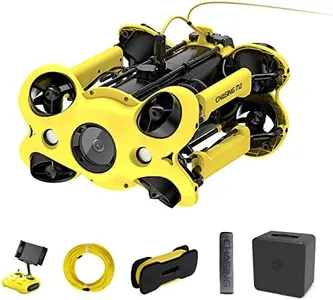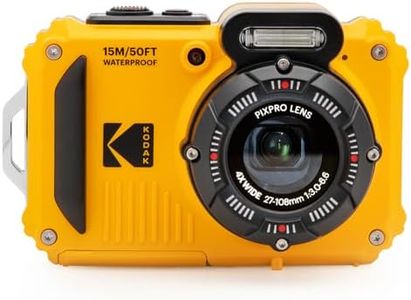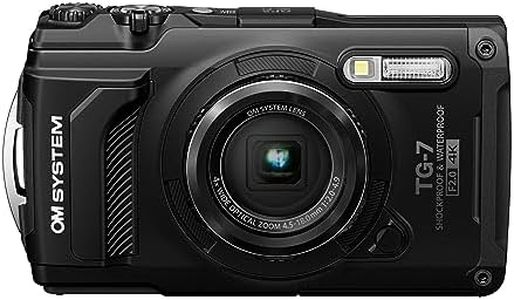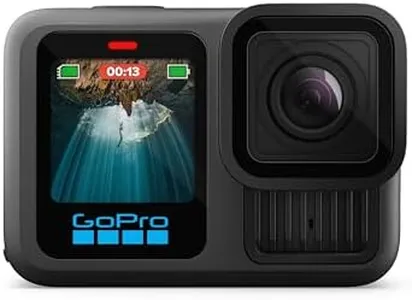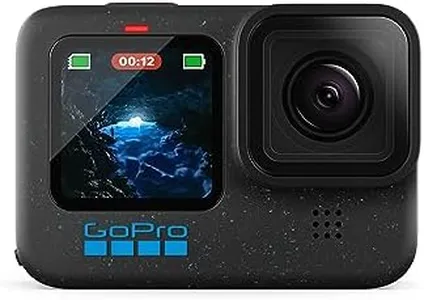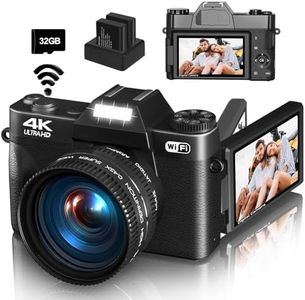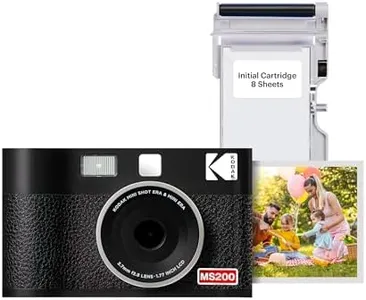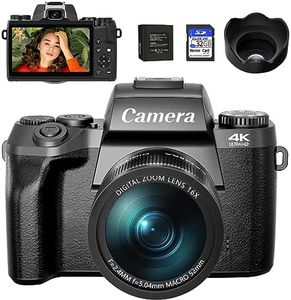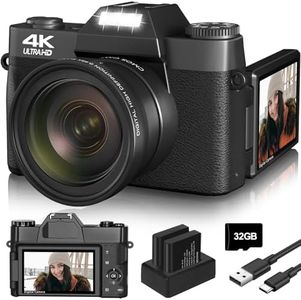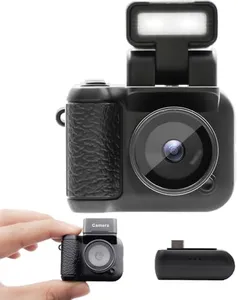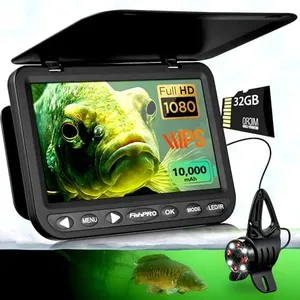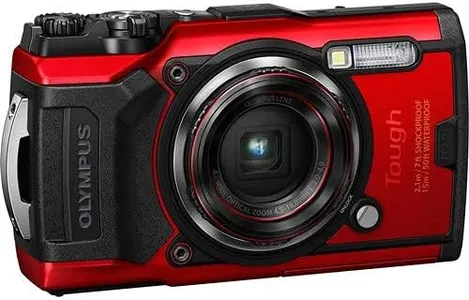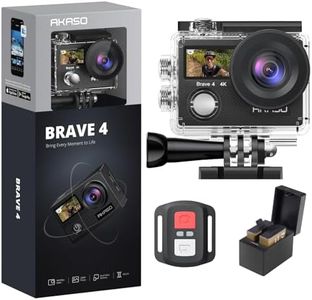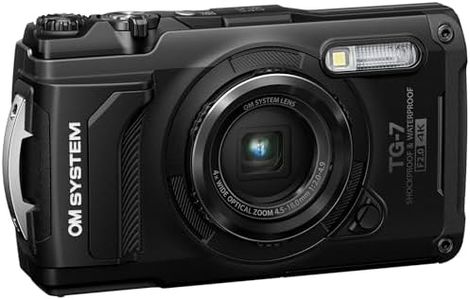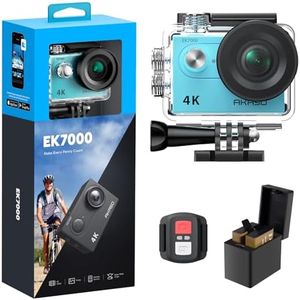10 Best Underwater Cameras 2025 in the United States
Our technology thoroughly searches through the online shopping world, reviewing hundreds of sites. We then process and analyze this information, updating in real-time to bring you the latest top-rated products. This way, you always get the best and most current options available.

Our Top Picks
Winner
KODAK PIXPRO WPZ2 Rugged Waterproof Shockproof Dustproof WiFi Digital Camera 16MP 4X Optical Zoom 1080P Full HD Video Vlogging Camera 2.7" LCD (Yellow)
Most important from
3165 reviews
The Kodak PIXPRO WPZ2 is a compact and rugged underwater camera designed for casual users and outdoor enthusiasts looking for a budget-friendly option. Its waterproof rating of up to 15 meters (49 feet) makes it suitable for snorkeling and shallow diving, though not for deep scuba diving. With a 16-megapixel 1/2.3-inch CMOS sensor, it delivers decent image quality for everyday underwater shots, especially in good lighting. The 4x optical zoom lens offers flexibility to frame photos from different distances, while digital image stabilization helps reduce blur in videos and photos, though it won’t be as effective as optical stabilization.
The camera supports Full HD 1080p video recording, which is good for casual vlogging and underwater videos, but lacks higher resolution or advanced video features that more expensive cameras offer. The 2.7" LCD screen is clear enough for composing shots, though a bigger or touch-sensitive screen would improve ease of use. Controls and menus are straightforward with auto and some manual settings, making it friendly for beginners.
Battery life is average, allowing nearly two hours of continuous video recording, which should be enough for typical dives or outings. The build is shockproof and dustproof, enhancing durability for rough conditions. WiFi connectivity is useful for quick sharing but may drain battery faster. Limitations include a maximum SD card size of 32GB and no support for MMC cards. Digital zoom may reduce image quality, and low-light performance is limited by the sensor size and aperture. The Kodak PIXPRO WPZ2 serves as a solid choice for amateurs who want a reliable, easy-to-use underwater camera for casual use rather than professional photography or deep diving.
Most important from
3165 reviews
OM SYSTEM Olympus Tough TG-7 Black Underwater Camera, Waterproof, Freeze Proof, High Resolution Bright, 4K Video 44x Macro Shooting (Successor Olympus TG-6)
Most important from
461 reviews
The OM SYSTEM Olympus Tough TG-7 is a solid choice for anyone looking for a rugged underwater camera that can handle harsh environments. It’s waterproof and crushproof, designed to survive tough adventures, including underwater use, freezing temperatures, and impacts up to 100 kg. With a 12-megapixel, 1/2.3-inch CMOS sensor, this camera delivers decent image quality for everyday underwater snapshots, though it won’t match the detail of higher-end cameras with larger sensors.
It offers 4K video recording, which is great for capturing underwater moments in sharp, smooth motion, and the variable macro system allows very close-up shots of tiny subjects, adding creative flexibility. However, stabilization is digital rather than optical, so videos and photos might show some shake if you move quickly underwater. Controls are user-friendly with an automatic autofocus system and manual options, making it accessible for beginners while still letting you experiment with settings.
The camera is lightweight at 249 grams, so it’s easy to carry on dives or trips. Battery life supports around 260 minutes of recording, which should be adequate for day excursions but may require spares for longer use. The build quality is impressive for its price range, focusing on durability and reliability in extreme conditions rather than premium image quality or professional-level features. This camera is best suited for amateur underwater photographers and outdoor enthusiasts who want a tough, easy-to-use camera that works well for casual diving, snorkeling, and rugged adventures.
Most important from
461 reviews
GoPro HERO13 Black - Waterproof Action Camera with 5.3K60 Video, 27MP Photo + Compatability with HB-Series Lenses
Most important from
1704 reviews
The GoPro HERO13 Black is a standout option for anyone seeking an underwater camera, particularly those who value high-quality video and durability. Its impressive 5.3K60 video resolution means you can capture stunning underwater scenes with clarity, making it ideal for both casual use and more serious underwater exploration. The 27MP photo capability is another strong point, allowing for vibrant images that can capture the beauty of marine life and underwater landscapes. Its compatibility with HB-Series lenses expands creative options, catering to those who may want to experiment with different perspectives.
When it comes to durability, the HERO13 Black is built to withstand harsh underwater conditions, boasting a solid waterproof depth rating. This means you can confidently take it diving or snorkeling without worrying about damaging the camera. The battery life is also improved, enabling longer shooting sessions, which is especially beneficial for longer adventures.
While the camera excels in video quality, the small screen size of 2.27 inches might make it challenging to frame shots accurately, especially underwater where visibility can be limited. Additionally, navigating through the camera's features may require a bit of a learning curve for those not used to action cameras. The reliance on micro SD for storage might also mean that users need to invest in quality memory cards to ensure smooth video capture without interruptions. The GoPro HERO13 Black is versatile, and its advanced features cater well to those who are passionate about underwater photography and videography, providing an excellent balance of performance, durability, and creative potential.
Most important from
1704 reviews
Buying Guide for the Best Underwater Cameras
Choosing an underwater camera is all about making sure the camera fits your specific needs, whether you're snorkeling casually, diving deep, or capturing stunning underwater wildlife. The right camera should balance easy handling, durability, and image quality. Think about how deep you plan to go, the kind of photos or videos you want to take, and how comfortable you are with settings and accessories. By looking at a camera's core features and understanding what matters for your use, you'll find it much easier to pick the one that's just right for your underwater adventures.FAQ
Most Popular Categories Right Now
